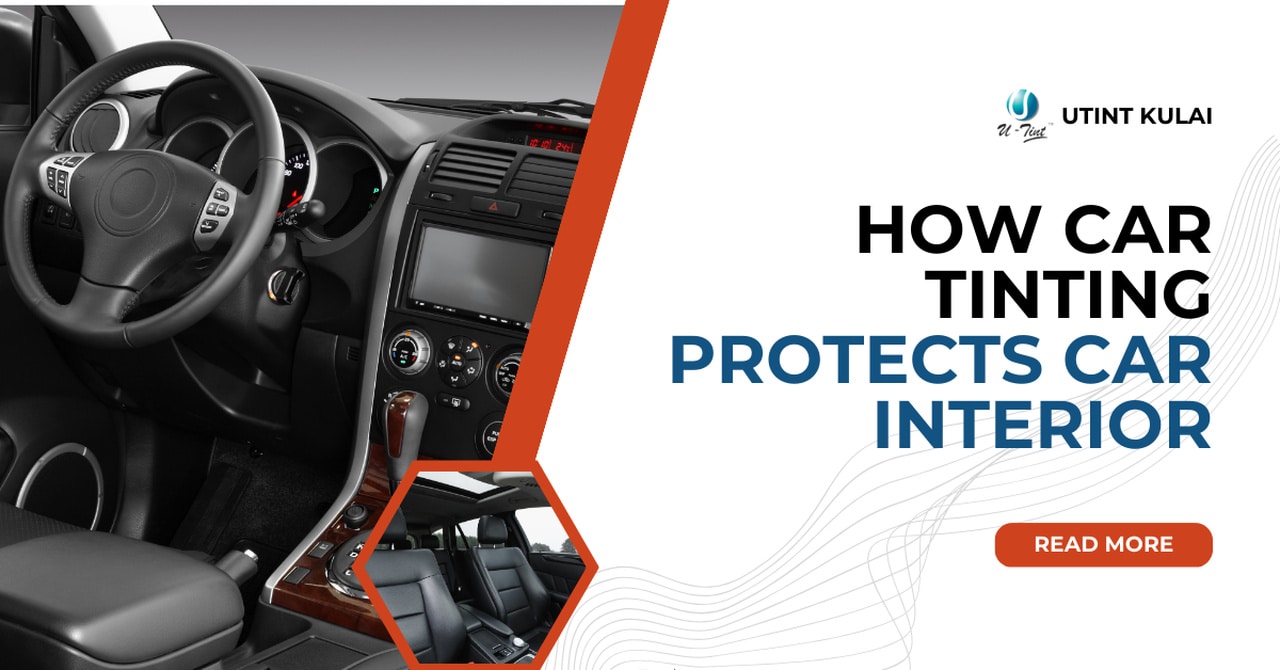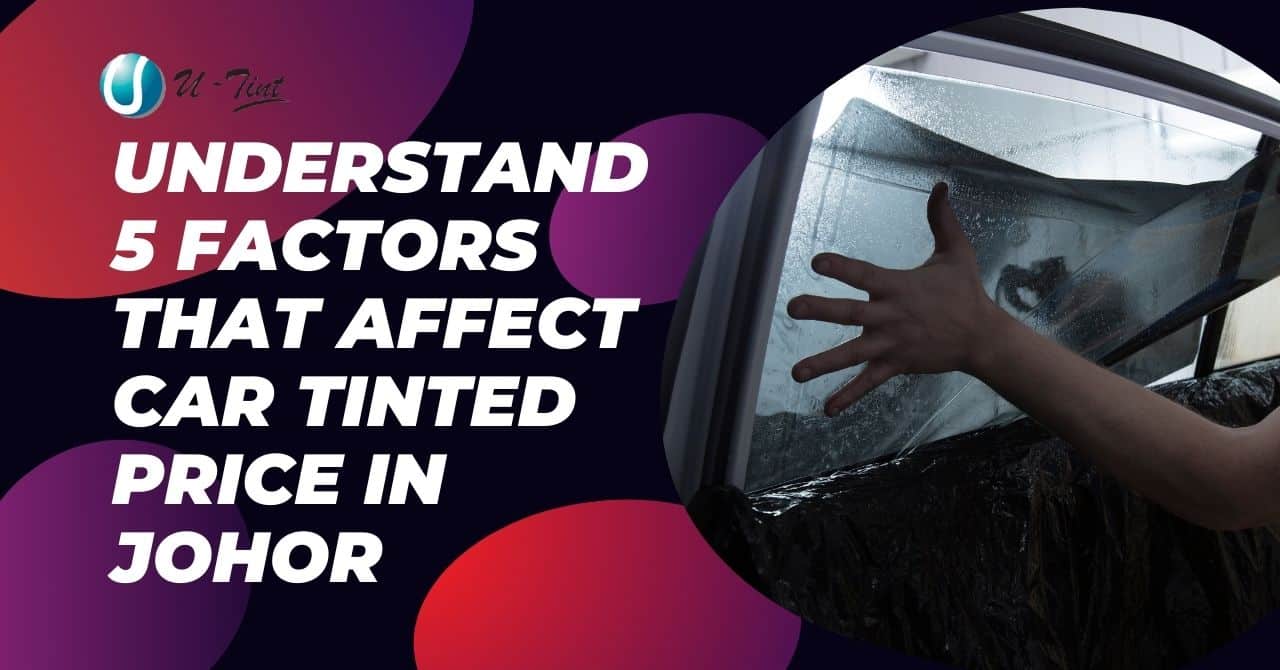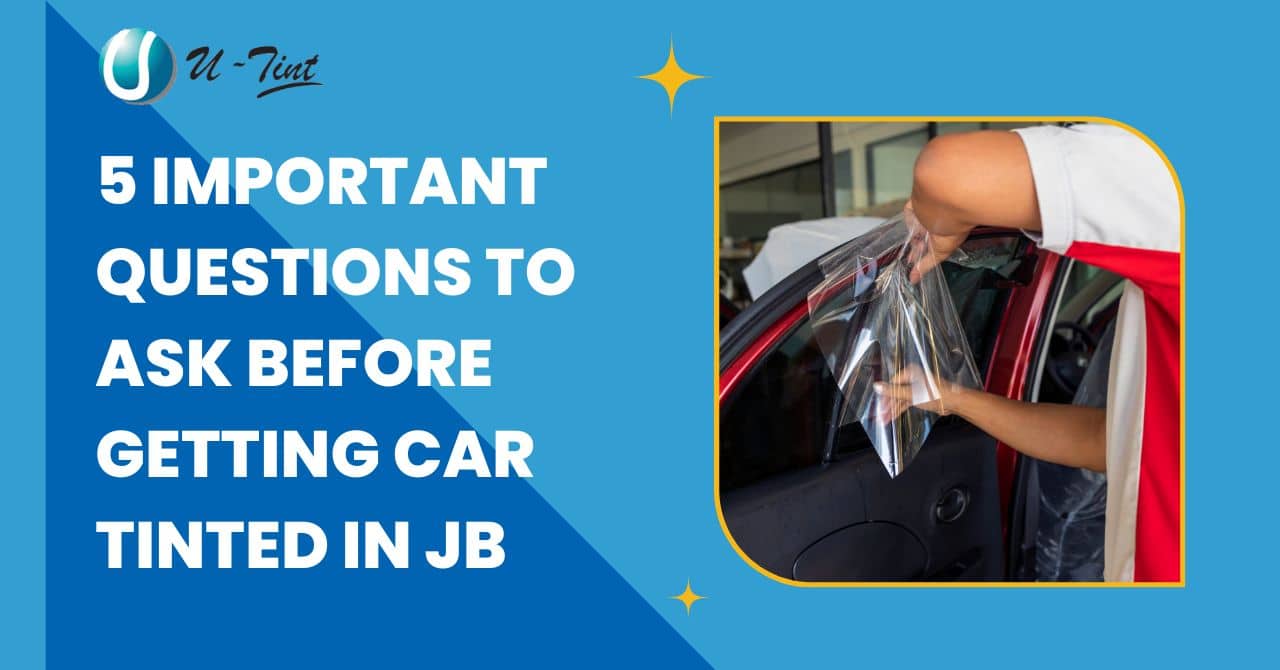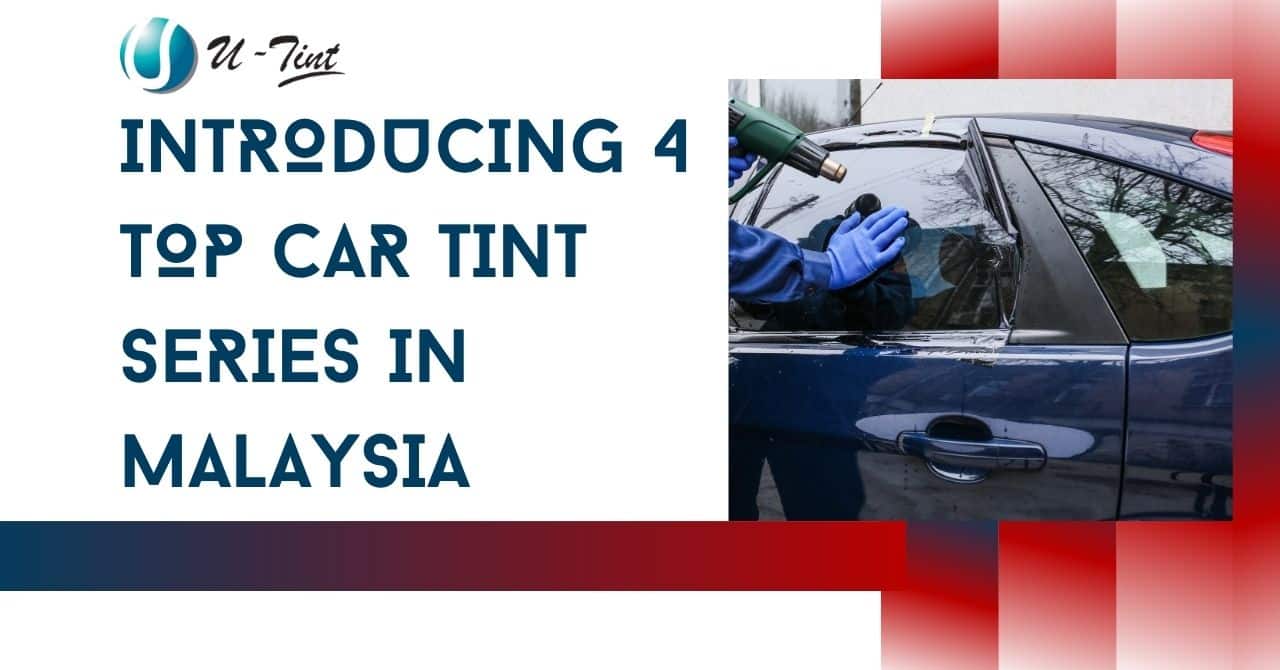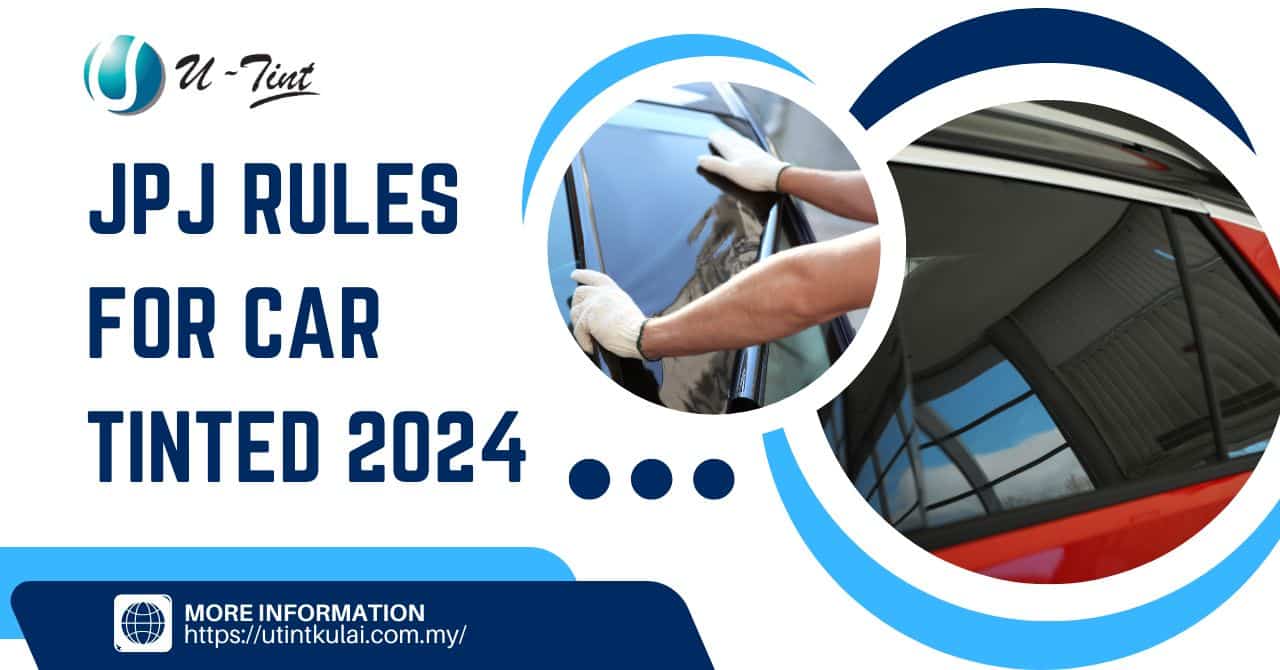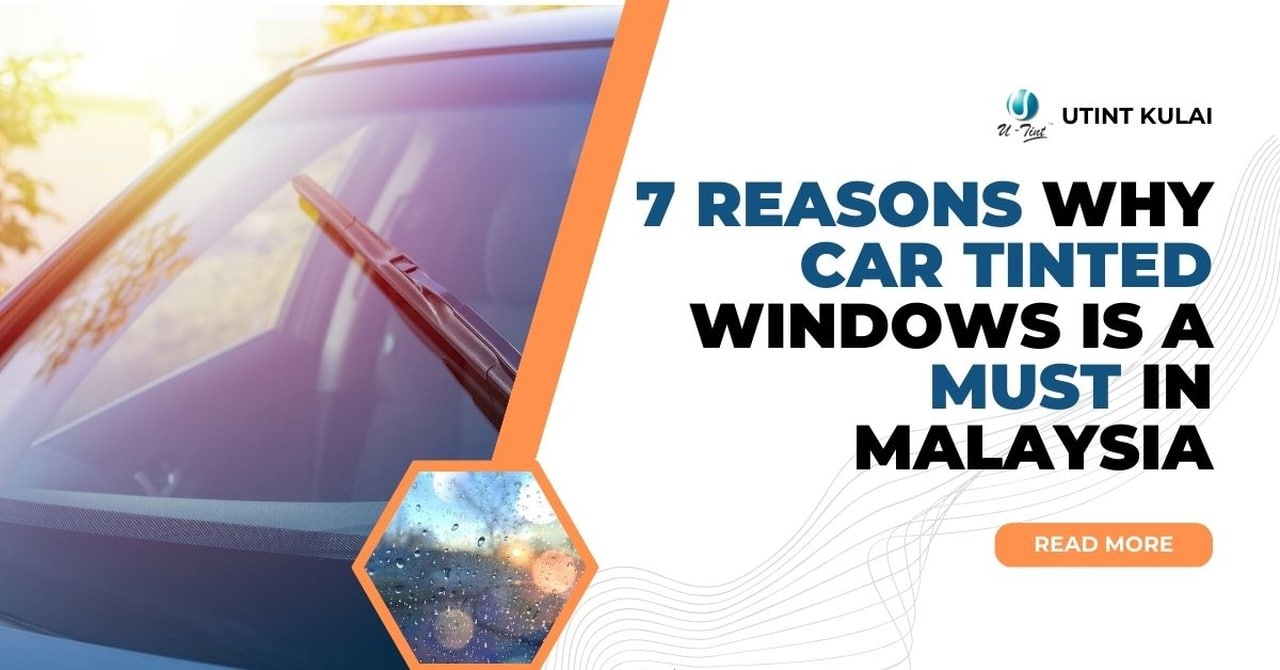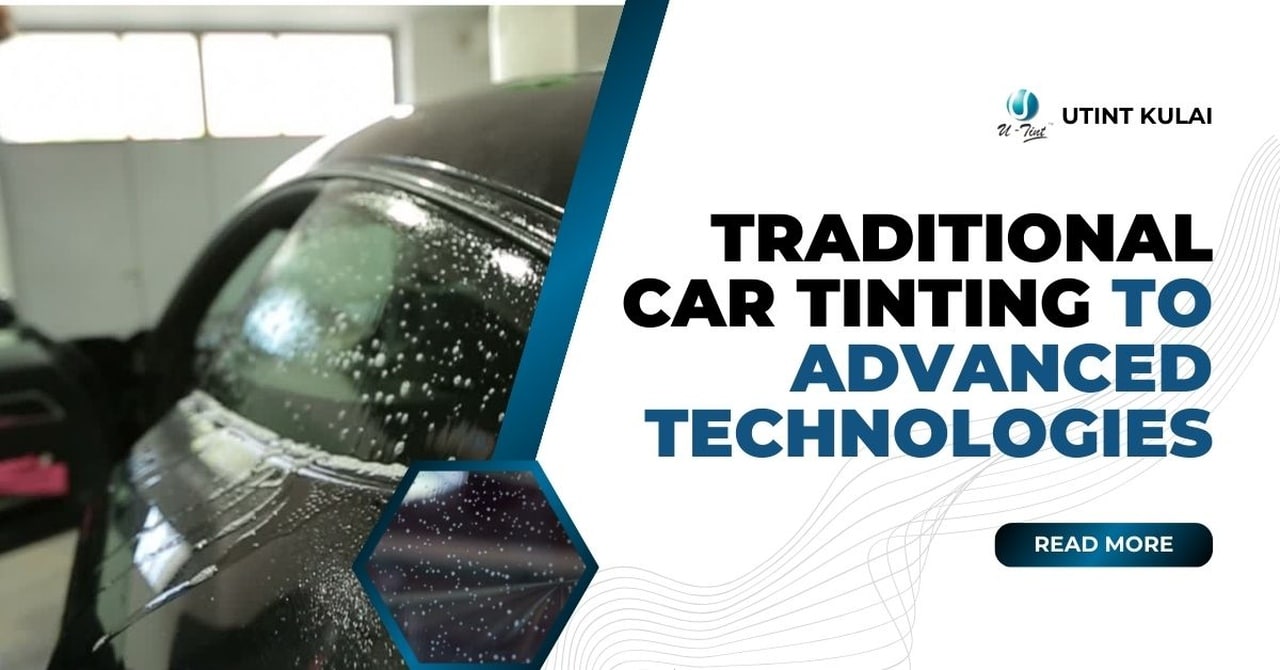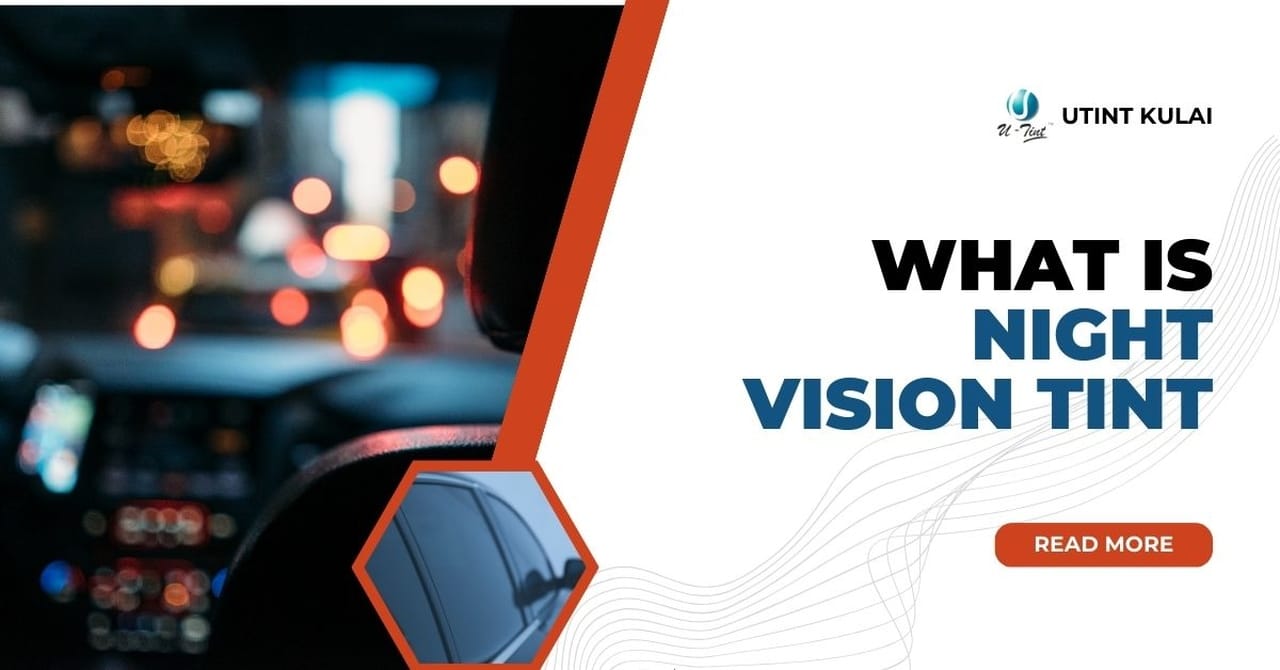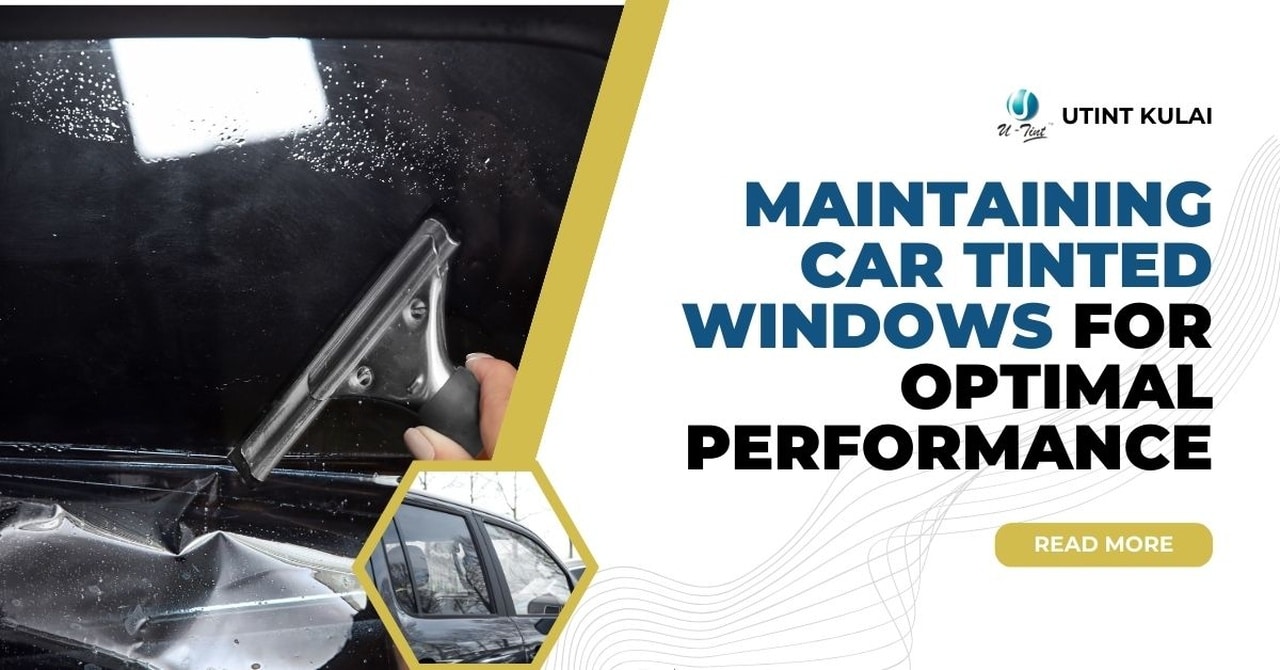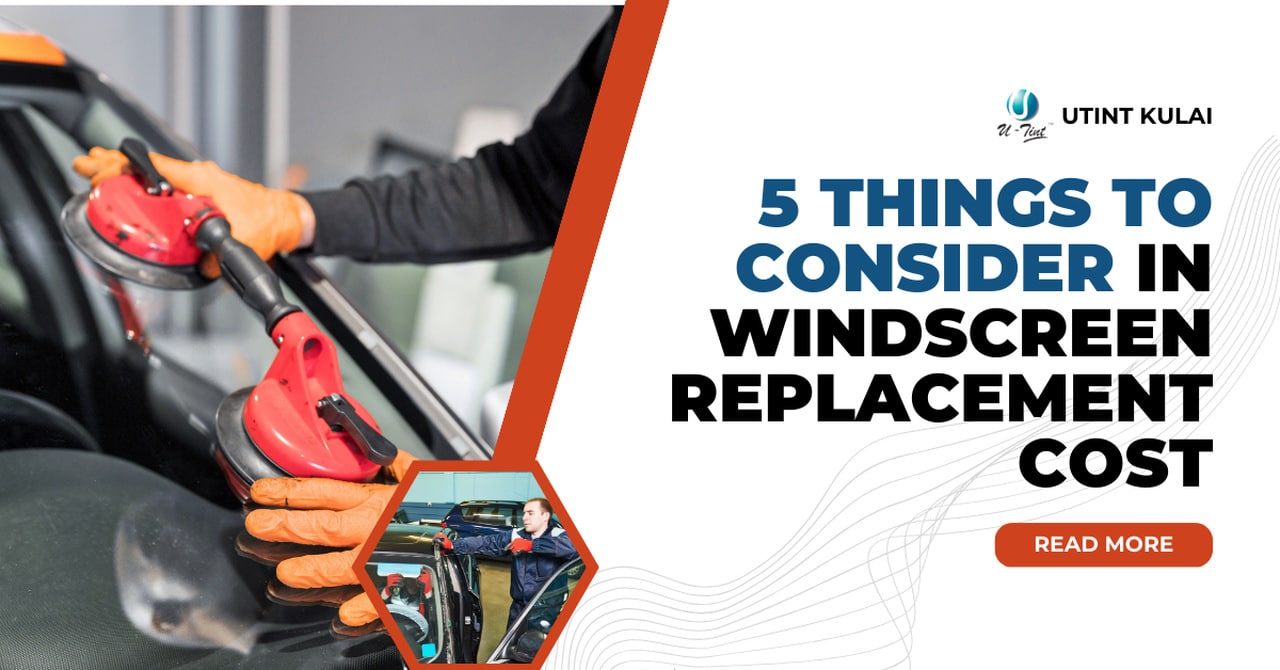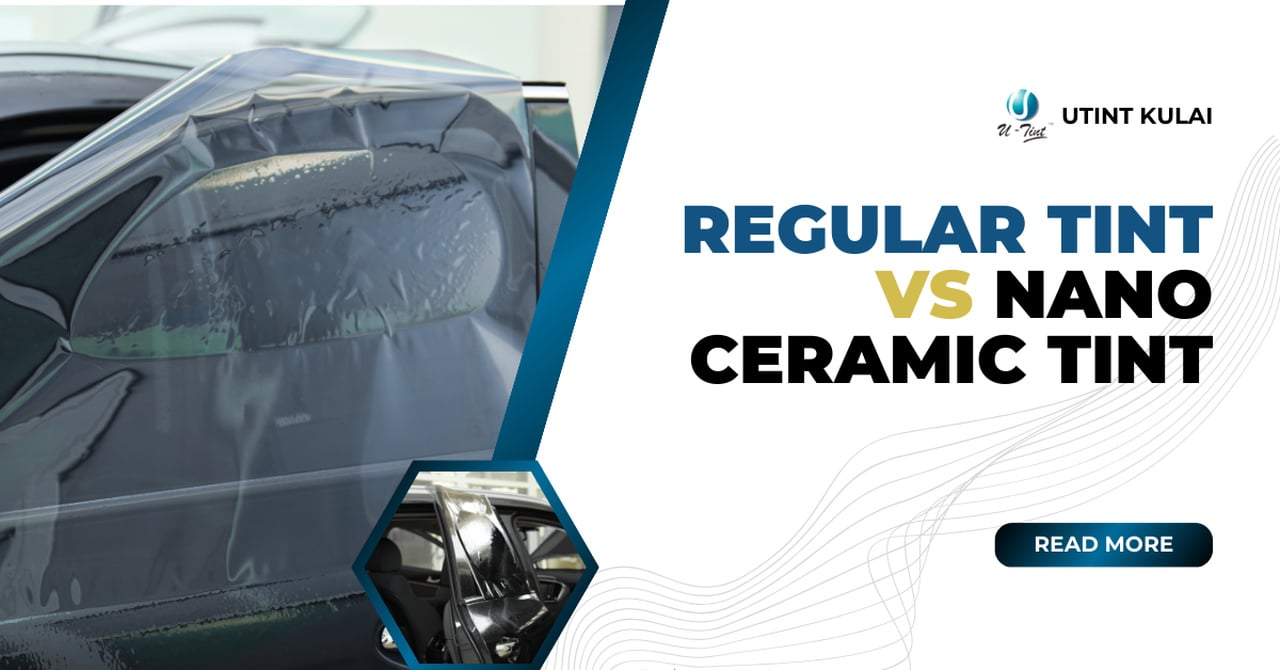Introduction
As we delve into the intricacies of this protective measure, you’ll uncover the layers of defense that quality car tinting provides against the relentless sun. Buckle up as we explore the ways tinting not only shields your car’s interior but also elevates your driving experience.
The harmful effects of sunlight on car interiors
Protecting your car’s interior from sun damage is essential to maintain its value and aesthetics. The scorching heat of the sun can fade upholstery, crack leather seats, and even damage the dashboard. That’s where car tinting comes in. By installing high-quality window films, you can not only enhance the appearance of your vehicle but also shield its interior from harmful UV rays.
At UTint Kulai, we understand the importance of keeping your car in top condition. Our premium car tinting services provide a range of benefits, including protection against sun damage. Our expert technicians use industry-leading films that block out UV rays, helping to prevent premature aging and cracking of your car’s interior.
In addition to blocking UV rays, our car tinting solutions also reduce the heat inside your vehicle, providing greater comfort during those hot summer months. With a variety of shades and tints to choose from, you can achieve your desired level of privacy without compromising visibility on the road.
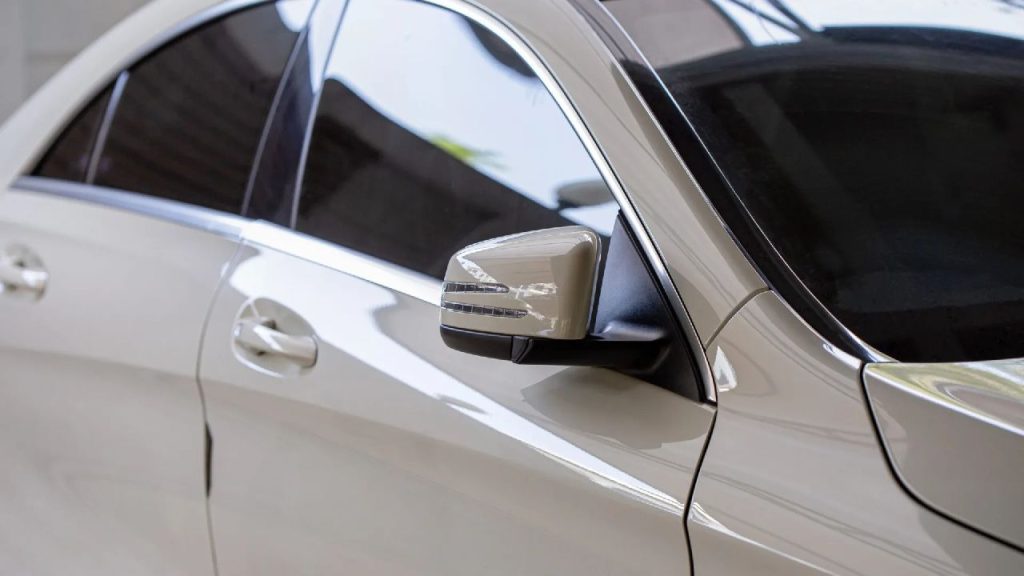
How car tinting protects against sun damage
Sunlight can wreak havoc on your car’s interior. The powerful UV rays can penetrate the windows and cause a range of damages. One of the most common effects is fading. Over time, the sunlight can fade the color of your upholstery, making it look dull and worn out. This is particularly noticeable in cars with light-colored interiors.
Furthermore, prolonged exposure to sunlight can lead to cracking and drying out of leather seats. Leather is a natural material that requires proper care to maintain its softness and durability. The UV rays from the sun can dry out the oils in the leather, causing it to become brittle and susceptible to cracking.
Additionally, the dashboard is often a victim of sun damage. The constant exposure to sunlight can cause the dashboard to fade, crack, and warp. This not only affects the aesthetics of your car but also reduces its overall value.
Car tinting offers a solution to these problems by providing a barrier between your car’s interior and the harmful UV rays of the sun. Let’s explore how car tinting can effectively protect your car’s interior.
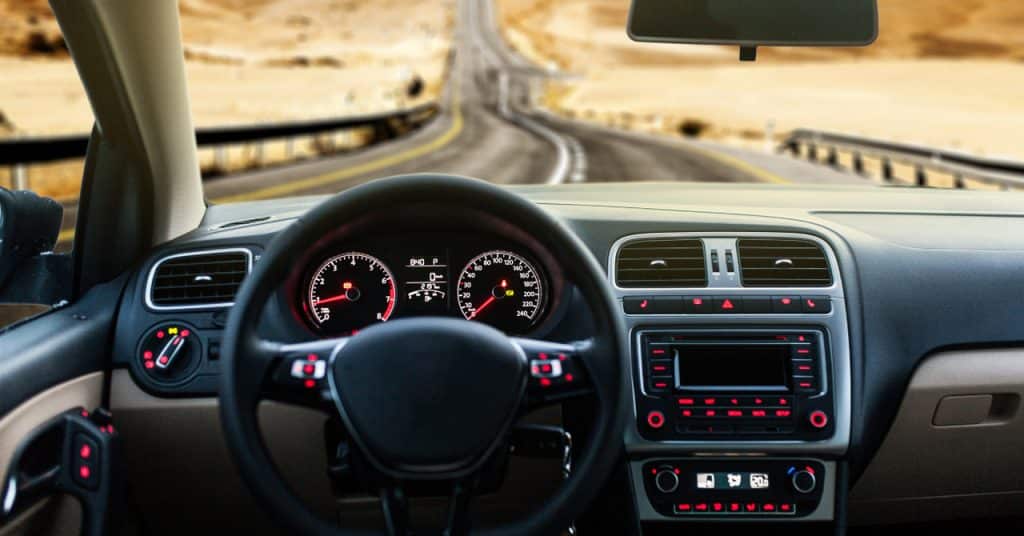
Different types of car tinting films
Car tinting works by applying a thin film to the windows of your vehicle. This film is specially designed to block out a significant percentage of the sun’s UV rays. By reducing the amount of UV radiation that enters your car, car tinting helps prevent the fading, cracking, and drying out of your car’s interior.
High-quality car tinting films can block up to 99% of harmful UV rays. This means that even on the brightest sunny days, your car’s interior will be shielded from the damaging effects of the sun. By investing in car tinting, you are taking proactive measures to preserve the beauty and longevity of your vehicle.
Moreover, car tinting also helps to regulate the temperature inside your car. The film acts as a heat barrier, reducing the amount of heat that enters your vehicle. This, in turn, makes your car’s interior cooler and more comfortable, especially during hot summer months. By reducing the heat, car tinting also helps to lower the load on your car’s air conditioning system, resulting in improved fuel efficiency.

Factors to consider when choosing car tinting
When it comes to car tinting, there are various types of films available in the market. Each type offers different levels of UV protection, heat reduction, and privacy. Here are some popular types of car tinting films:
1. Dyed Film: This type of film is made by applying a layer of dye between an adhesive layer and a protective top coat. Dyed films are effective at reducing glare and providing privacy but offer limited heat reduction compared to other types.
2. Metalized Film: Metalized films consist of multiple layers, including a metallic layer that reflects heat and UV rays. These films offer excellent heat rejection and UV protection. However, they may interfere with GPS, cell phone signals, and other electronic devices.
3. Carbon Film: Carbon films are known for their high heat rejection properties. They block a significant amount of infrared radiation, keeping your car’s interior cool and comfortable. Carbon films also provide good UV protection and do not interfere with electronic signals.
4. Ceramic Film: Ceramic films are the latest advancement in car tinting technology. They contain ceramic particles that block out both heat and UV rays without interfering with electronic signals. Ceramic films offer superior heat rejection, excellent UV protection, and clear visibility.
Before choosing a car tinting film, consider your specific needs and preferences. Factors such as climate, local regulations, and personal style should all be taken into account.

The process of car tinting installation
When selecting a car tinting film, there are several factors you should consider:
1. UV Protection: Look for films that offer high UV protection to safeguard your car’s interior from sun damage. The higher the percentage of UV rays blocked, the better the protection.
2. Heat Rejection: If you live in a hot climate, prioritize films with excellent heat rejection properties. This will help keep your car’s interior cool and reduce the strain on your air conditioning system.
3. Visibility: Consider the level of privacy you desire. Some films are darker and provide more privacy, while others are lighter and offer better visibility.
4. Legal Regulations: Familiarize yourself with the local laws and regulations regarding car tinting. Different regions have specific guidelines on the permissible levels of darkness for car window tinting.
5. Warranty: Check the warranty offered by the car tinting brand. A reliable warranty will give you peace of mind knowing that you are protected against any defects or issues with the film.
By considering these factors, you can make an informed decision and choose the right car tinting film for your vehicle.
Maintenance tips for car tinting
Car tinting installation is a precise and delicate process that requires professional expertise. Here is a general overview of the steps involved:
1. Preparation: The first step is to thoroughly clean the windows to ensure the film adheres properly. Any dirt, dust, or debris on the windows can affect the installation process.
2. Cutting the Film: The car tinting technician will measure the windows and cut the film to the appropriate size. This is done with precision to ensure a perfect fit.
3. Application: The technician will carefully apply the film to the inside of the windows, starting from the top and working their way down. They will use a squeegee to remove any air bubbles and ensure a smooth, even application.
4. Drying Time: The film will need some time to dry and adhere to the windows properly. This process typically takes a few days, during which you should avoid rolling down the windows.
5. Final Inspection: Once the film is fully dried, the technician will inspect the installation to ensure it meets the highest standards. They will check for any imperfections or bubbles and make any necessary adjustments.
Professional car tinting installation ensures a seamless and long-lasting result. It is recommended to entrust this task to experienced technicians to achieve the best outcome.
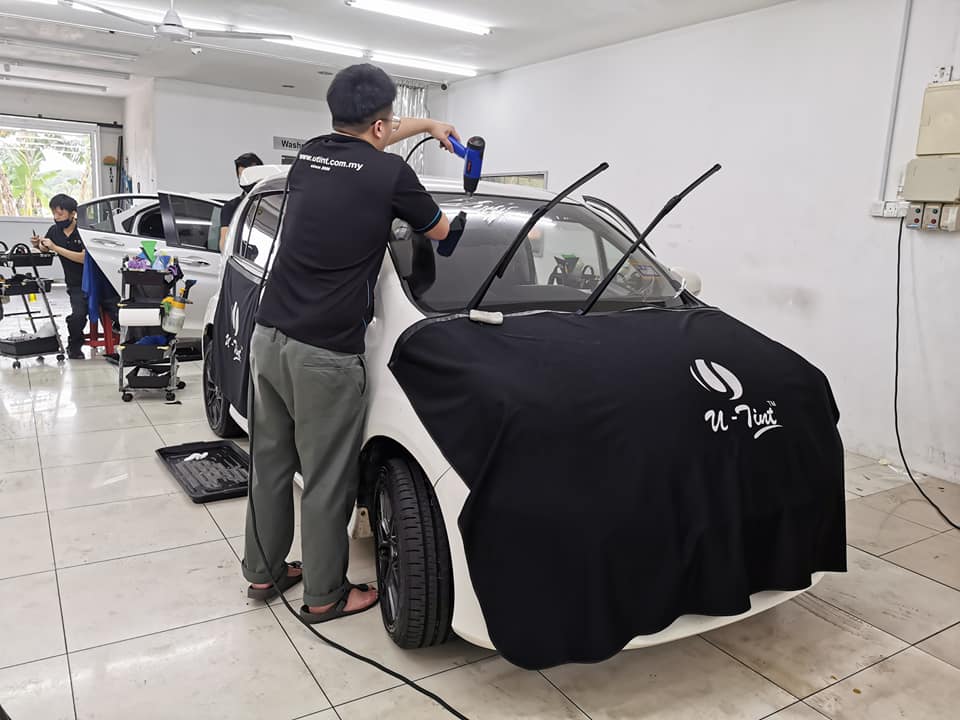
Conclusion
As we conclude our exploration of “How Car Tinting Protects Your Interior from Sun Damage,” it’s evident that this simple yet effective measure goes beyond aesthetics. Car tinting is a practical investment in the longevity and comfort of your vehicle. Embrace the shade, protect your interior, and enjoy the ride with confidence.
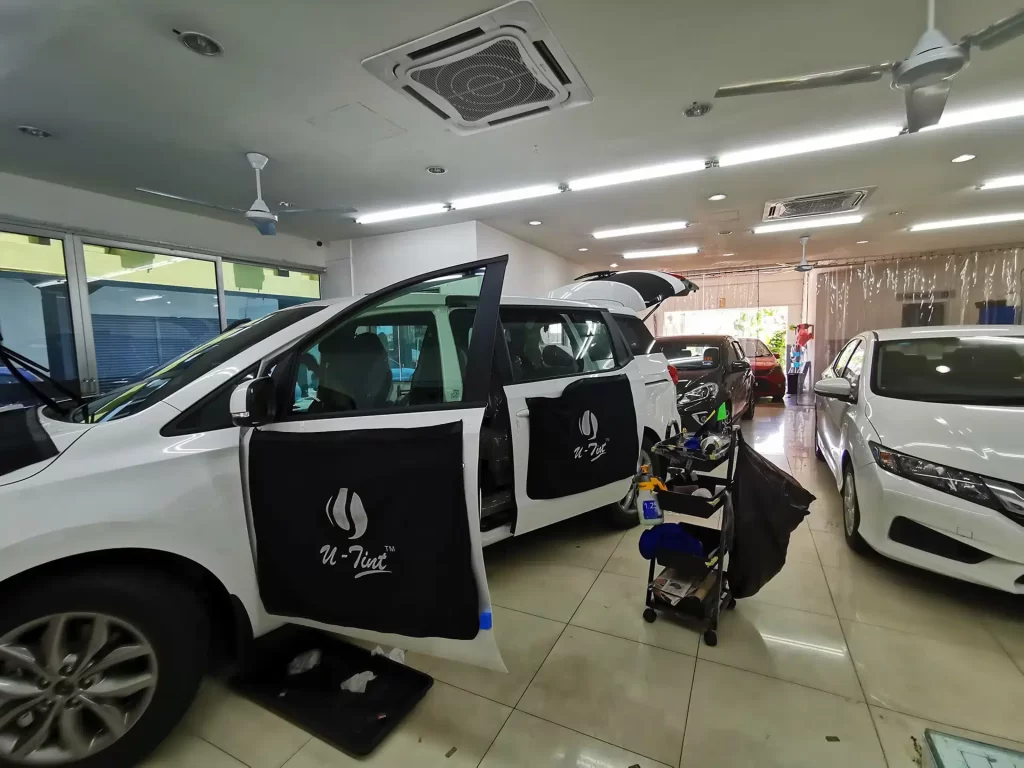
FAQ
Car tinting can last anywhere from five to ten years, depending on the quality of the tint and proper maintenance.
No, quality car tinting should not significantly affect visibility at night. It is designed to reduce glare during the day without compromising nighttime visibility.
It’s advisable to wait a few days before washing your car after tinting to allow the tint to fully cure and adhere to the windows.
No, reputable car tinting should not interfere with electronic devices. In fact, it protects them by reducing heat-related damage.
Car tinting laws vary by location. Check your local regulations to ensure compliance with tint darkness limits.
While DIY kits are available, it’s recommended to seek professional installation. Professionals ensure precision, durability, and adherence to legal regulations, providing you with the best results.

